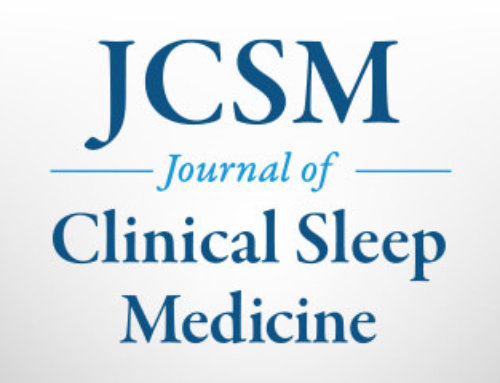Westchester, Ill.—A study in the Sept. 1 issue of the journal Sleep shows that the subjective interpretation of temperature change is decreased in older adults, particularly those who suffer from insomnia.
The study is the first to find pronounced attenuation of subjective thermosensitivity in elderly insomniacs within the small range of normal bed temperatures. Researchers manipulated core body temperature, proximal skin temperature and distal skin temperature in order to observe the effect on sleep-onset latency. All temperature increases were seen as discomforting by the elderly with no sleep complaints, but none were discomforting to elderly insomniacs.
This inability to adequately feel how warm or cnew the body is could contribute to the poor sleep of elderly insomniacs. Surprisingly, results indicate that warming the skin of elderly people may facilitate sleep onset despite the diminished ability to detect changes in temperature. Core body cooling also accelerates sleep onset in elderly insomniacs.
“We were positively surprised by the fact that although elderly insomniacs have troubles detecting small changes in skin temperature, the small changes are still effective in promoting sleep onset,” said principal investigator Roy Raymann, PhD, psychophysiologist at the Netherlands Institute for Neuroscience in Amsterdam.
The two-day study was conducted in a sleep laboratory and involved eight elderly subjects without sleep complaints and eight elderly insomniacs. Their average age was 65.8 years. Participants were fitted with a thermosuit for skin temperature manipulation and were evaluated by overnight polysomnography.
The authors suggest that elderly insomniacs who are not sensitive to subjective changes in temperature may fail to change the bedding or their clothing when the temperature in the bedroom is too hot or too cnew. The elderly may benefit from interventions that increase skin temperature, such as mild skin warming via controlled and feed-back looped electric blankets. Another suggestion is for the elderly to take a hot bath 1.5 to 2 hours before the planned bed time in order to warm the skin and lower core body temperature.
A media fact sheet about insomnia is available from the AASM at https://www.aasm.org/resources/FactSheets/Insomnia.pdf.
Information about insomnia for patients and the public is available from the AASM at http://www.sleepeducation.com/Disorder.aspx?id=6.
Sleep is the official journal of the Associated Professional Sleep Societies, LLC, a joint venture of the American Academy of Sleep Medicine and the Sleep Research Society.
For a copy of the study, “Diminished Capability to Recognize the Optimal Temperature for Sleep Initiation May Contribute to Poor Sleep in Elderly People,” or to arrange an interview with an AASM spokesperson, please contact Kelly Wagner, AASM public relations coordinator, at (708) 492-0930, ext. 9331, or kwagner@aasm.org.
###




